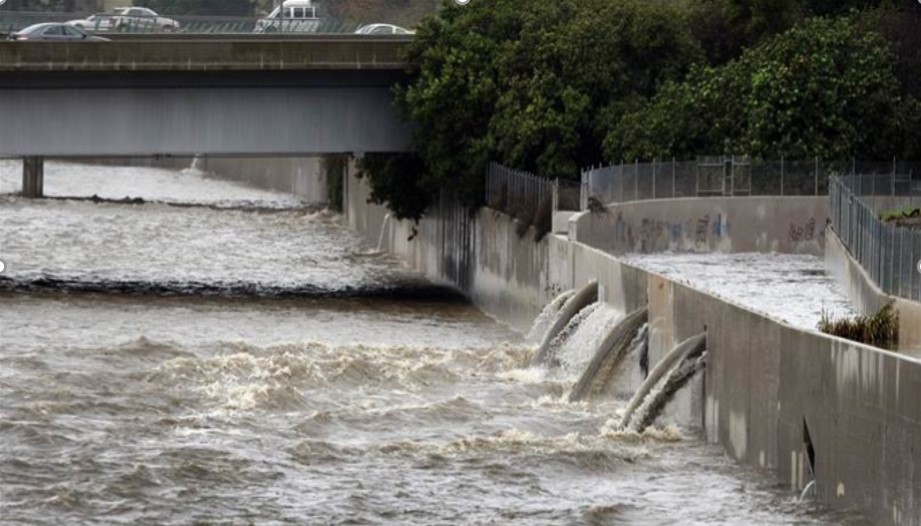In Southern California, we have a storm drain system and a sewage system that are completely separate. The storm drain system is called the municipal separate storm sewer system (MS4). Two main types of water flow through the MS4: (1) Stormwater, which is rainwater that cannot infiltrate into the ground naturally and instead builds up as it flows over the ground, and (2) dry weather runoff, which originates when it is not raining through activities such as overwatering lawns or washing cars.
Separating these systems reduces the risk of sewage spills when a storm might otherwise flood our sewage system, and it attempts to get stormwater out of our streets before they flood. However, this separated system is also the reason why stormwater flows directly into our rivers, lakes, and ocean without being filtered or treated. While sewage is sent to treatment facilities to be cleaned before it is discharged, stormwater flows over streets, through storm drains, and out into receiving waters, picking up bacteria, metals, trash, and other pollutants along the way. This leads to serious water quality issues throughout the Los Angeles region that threaten public and environmental health.

The EPA (Environmental Protection Agency) has long recognized stormwater as the number one source of pollution into our surface waters, especially in a heavily urbanized area like Los Angeles, because water quality is much worse within 72 hours of a rain event. On average, rainfall in the Los Angeles region accounts for nearly 100 billion gallons of contaminated stormwater flushing through our storm drain system and into local bodies of water.
Under the Federal Clean Water Act, which is celebrating its 50th anniversary this year, anyone who discharges water is required to limit the concentration of pollution in that water. This requirement is regulated under a permit to discharge water, issued by the State Water Board. The discharge of polluted stormwater through the storm drain system is regulated through an MS4 Permit. Cities and counties are permittees under an MS4 Permit and are each responsible for reducing their polluted runoff.
Stormwater is currently the number one source of pollution, but it could instead become a new source of water for beneficial use. If we capture, treat, and reuse our stormwater, we can decrease water pollution and increase local water supply through groundwater infiltration or onsite use/storage. If we use vegetated nature-based solutions to achieve these goals of water quality and supply, we can simultaneously improve ecosystem health, community health, and climate resiliency.

The good news is that Los Angeles has the necessary tools to make great strides in this type of multi-benefit stormwater capture. Cities and Counties have had over 30 years to make and adjust stormwater plans through the MS4 Permit, and there are many opportunities to fund new stormwater capture projects through local programs, state funding, and even federal funding. The tools are available, but we need both public and regulatory pressure to urge cities to pick up those tools and do something amazing with them.
Annelisa Ehret Moe is a Water Quality Scientist with Heal The Bay.

